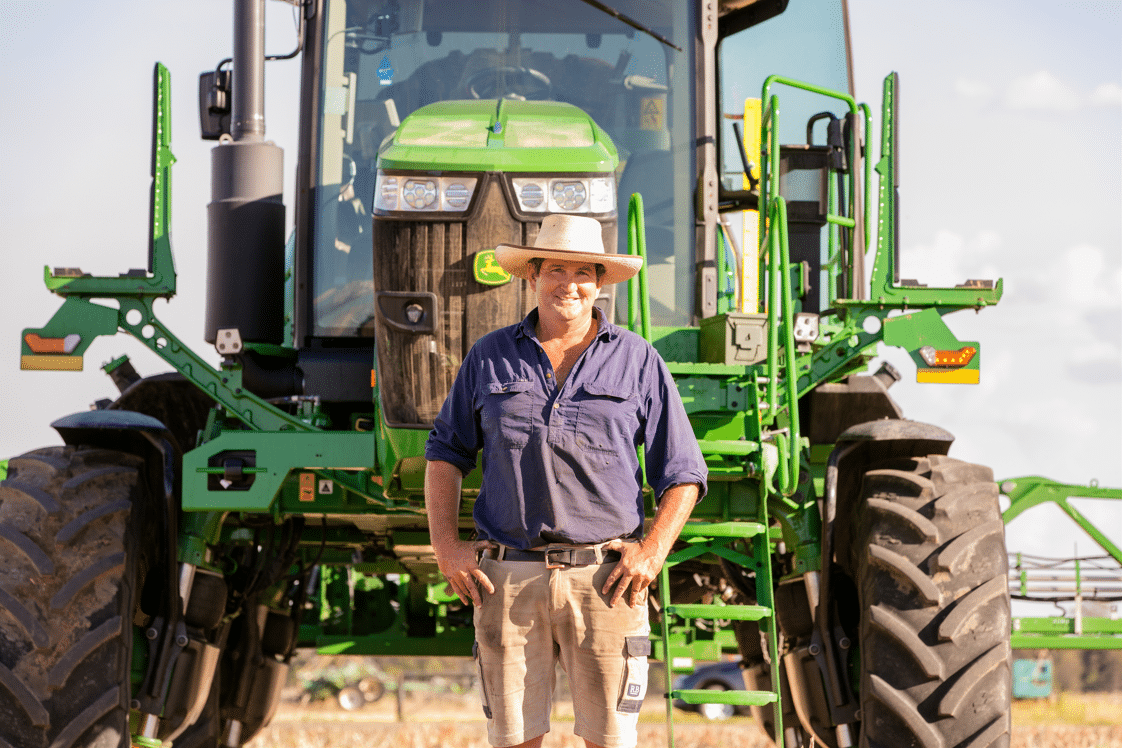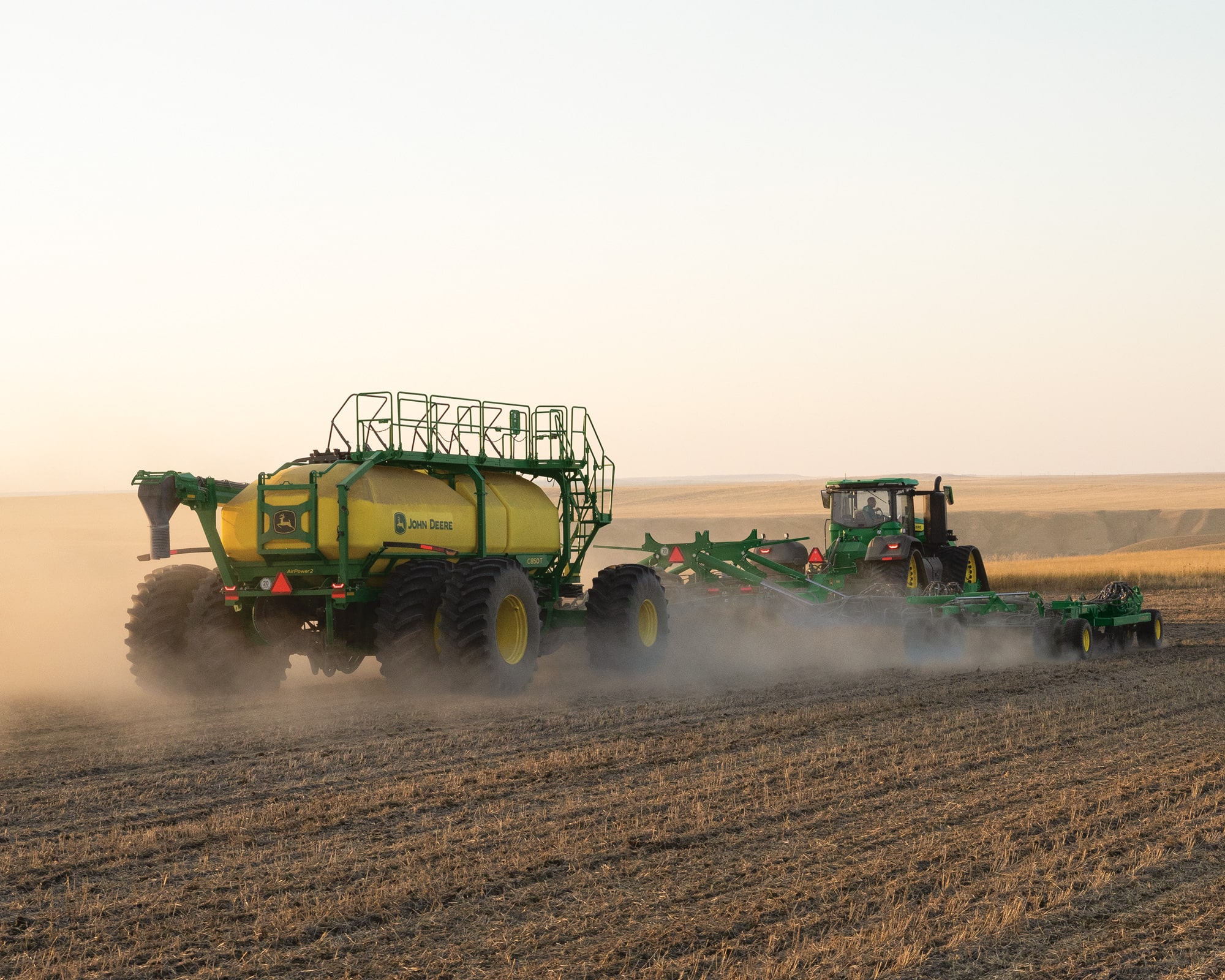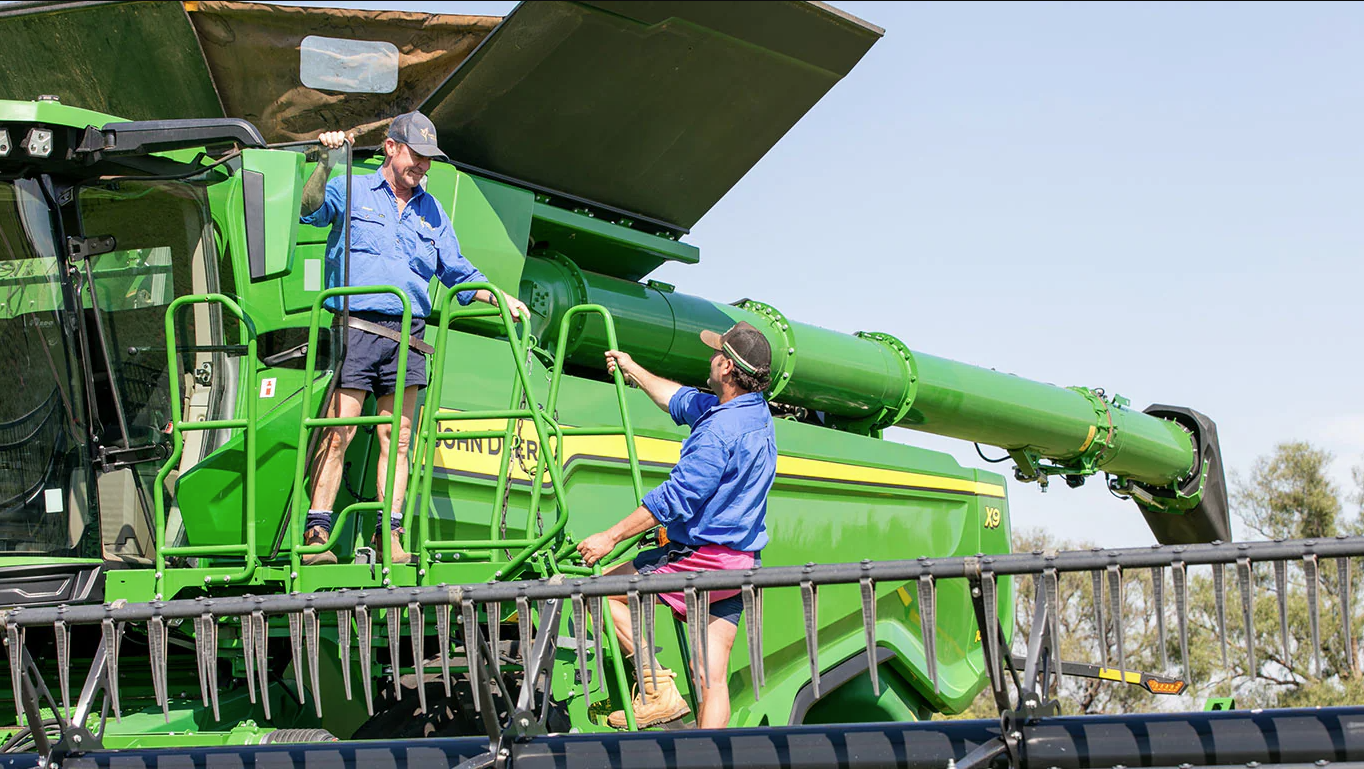Crestmead, Queensland (22 May, 2023) – THE summer weed season of 2022-23 has provided a good testing ground for Angus Siddins to trial his new John Deere 412R self-propelled sprayer with See & Spray Select technology over 4500ha of fallow in northern NSW.
Based at ‘Yannarie’, North Star, Mr Siddins is a beef producer and broadacre grain grower, cropping wheat, barley, chickpeas, sorghum and dryland and irrigated cotton on a 7500ha aggregation with an annual rainfall of 650mm.
Mild temperatures combined with small showers of rain and then a very wet March have ensured weeds like fleabane, feathertop Rhodes grass, milk thistle and summer grasses are a constant challenge.
By the end of April, most of the land under cropping had been treated with four passes of the 412R, including one residual spray. With a last pass planned before sowing in May, Mr Siddins said See & Spray Select had more than justified his investment.
“The data coming through John Deere Operations Center™ indicates we’ve reduced our chemical bill by 25 per cent since October, which is quite a substantial saving and should put us on track to recoup the cost of the sprayer in one year,” he said.
John Deere’s See & Spray Select integrated camera technology detects green weeds as small as 1.5cm in fallow and triggers a targeted treatment application from multiple nozzles to these plants only.
It’s proven to be a simple, easy-to-use system, Mr Siddins said, that can be controlled from the cab.
“We’ve had selective sprayers for 16 years but See & Spray Select uses a completely different method to detect weeds and has prompted a change in our management mindset,” he said.
“In the old days we would spray and then visually check for light weed loads with the attitude ‘We’ve got to spray even though there aren’t many weeds there’. But with See & Spray Select we leave it on to run all the time, so we’re saving on every pass.
“Because you’re not spraying where there are no weeds, you’re actually knocking the top off in every pass. For example, if your paddock is 100ha, the first pass may mean you’re spraying 85 per cent, the next 50 per cent, then it drops back to around 25 to 30 per cent.”
The See & Spray Select technology requires a speed limit of around 18km/hr, but Mr Siddins said there’s minimal loss of productivity.
“The CommandDriveTM powertrain in the new John Deere sprayers offers quite a substantial saving in operating costs over the previous machines, and the cost of going slower is outweighed by the extra driven hectares you get out of a load,” he said.
“The 412R is a smaller, lighter machine with a 4500L tank, so if we’re only spraying 50 per cent of the paddock then we’re halving the number of times we have to fill up in a day.”
The sprayer rarely misses weeds, he said, and the cameras are very reliable.
“If you’ve come from a selective sprayer background it’s easy to fall back into the pattern of ‘Don’t use the cameras until weeds are further down the track’, but with See & Spray Select you just turn it on and leave it.”
He describes the technology as ‘a very valuable tool’ and agrees with another local farmer’s comment that it’s one of the biggest advances in spraying equipment in 20 years.
“Ultimately our decision to buy the 412R with See & Spray Select was based on one logo running the whole show, rather than a third party bolted onto something else,” Mr Siddins explained.
“The system is designed to work as one. See & Spray Select runs seamlessly in the cab with all the reporting and maps collected in Operations Center and some very handy information coming out of the back end.
“We’ve pulled our old sprayer out once this summer and that was only because John Deere requested our 412R for a demonstration day, so that’s as much proof as we need that it’s a winner.”
The Siddins’ are supported by their local John Deere dealership, RDO Equipment in Goondiwindi, and run a green ‘stable’ that includes four 8 Series tractors – an 8345RT, 8320R and two 8R310’s – as well as a 6155M, two S780 and S680 combine harvesters and John Deere Gator™ utility vehicles.
Media release written by John Deere Australia.

 MyDealer:
MyDealer:


